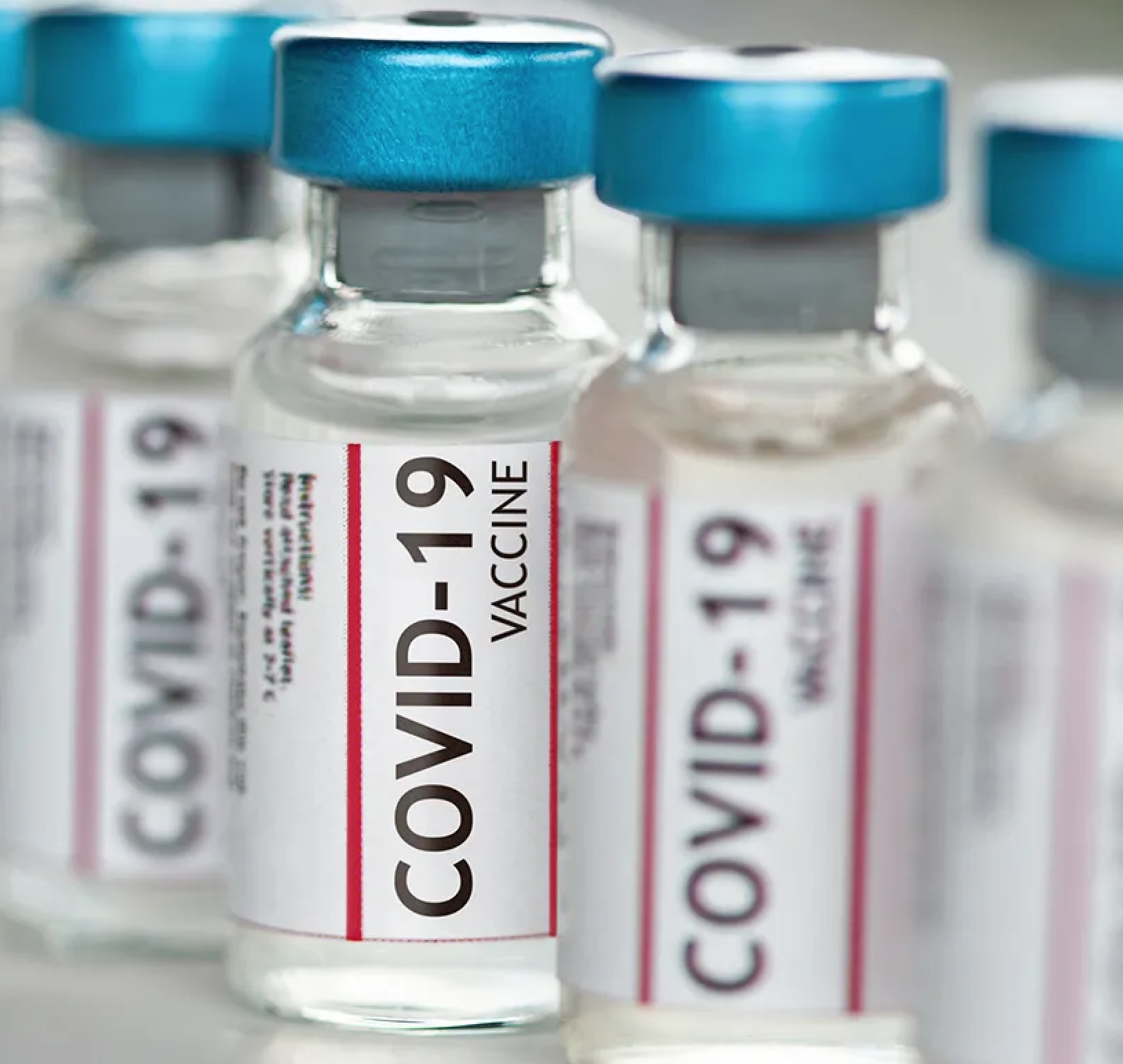
A reader writes that “Big Pharma wants you to believe ivermectin will not prevent or treat COVID but IT WILL!” Is this true or false?
January 31, 2024
The latest evidence on COVID-19 vaccines: What you need to know and what the best science shows
February 1, 2024On a January night in 1944, we boarded a troop transport carrying a cargo of 5,000 replacement infantrymen out of Newport News, Virginia. Each of us felt alone.[1]

LIBERTY SHIPS
“Built by the mile and chopped off by the yard,” and delivered at the rate of one a day, American ingenuity and can-do — facing a global challenge at the end of 1941 — transformed its shipbuilding industry and produced more than 2,700 Liberty ships in five years to move men and materiel to the front.
~~~~~
The Liberty ships — a vast new fleet for the war effort — was built in a national “Virtual Shipyard” that harnessed skills, resources, and facilities all across America. From 1941 to 1945, the United States increased its shipbuilding capacity by more than 1,200% and produced over 2,700 Liberty Ships, 800 Victory Vessels, 320 T-2 Tankers, and various other commercial and naval auxiliary vessels for a total of 5,200 ships constructed for the period.
This accomplishment required a revolution in shipbuilding, or, more precisely, ship production. Under the ingenious leadership of Henry J. Kaiser, yards were laid out along revolutionary principles as assembly plants for the 30,000-plus components, produced in thousands of factories in more than thirty-two states, that went into the making of a Liberty Ship. Modular construction techniques were created which forever changed the face of shipbuilding, portable units for continuous welding were developed, and conventional tools and ways were abandoned. Shipbuilding technology was advanced by at least 20 years during this period and man-hour requirements were reduced by about one-third of those previously required in construction of similar ships.
Perhaps most remarkable was the diversity of the Americans who built Kaiser’s “Liberty Fleet” — probably only one in 200 had seen a shipyard before and 25% had not ever seen the sea. Many of his executives had not previously faced ship construction problems, and so they approached their new tasks — as indeed the whole organization did — with open minds and no preconceived theories about conventional shipbuilding, but with the determination to get things done quickly, efficiently, and with the minimum wastage of time, materials, and labor.[2]
~~~~~
The speed at which Liberty Ships could be constructed allowed the US to build cargo vessels faster than German U-boats could sink them. This, along with Allied military successes against the U-boats, ensured that Britain and Allied forces in Europe remained well-supplied during World War II. An astonishing 2,710 vessels were launched in less than four years, and only 200 were lost to enemy action.
Liberty Ship Specifications: Displacement: 14,245 tons; Length: 441 ft. 6 in.; Beam: 56 ft. 10.75 in.; Draft: 27 ft. 9.25 in.; Propulsion: Two oil fired boilers, triple expansion steam engine, single screw, 2500 horsepower; Speed: 11 knots; Range: 11,000 miles[3]
~~~~~
While reviewing blueprints of the Liberty ships at the White House, President Franklin D. Roosevelt, who loved naval vessels and had an eye for design, mused aloud to Maritime Commission administrator Admiral Emory S. Land, “I think this ship will do us very well. She’ll carry a good load. She isn’t much to look at, though, is she? A real ugly duckling.” Thus, the Liberty ships received their second nickname, “the ugly ducklings.”[4]
The Liberty ships proved to be too slow and too small to carry the tons of supplies the United States and her Allies would need to win the war. In 1943, the United States began a new ship-building program. These new ships would be faster, larger, and able to carry cargo long after the war was finished. These were the Victory ships.[5]
~~~~~
At sea … we were given instructions on how American servicemen should conduct themselves. … A few hours out of the harbor, the water started to get rough. Not only did we go up and down with the ship also rolled from side to side. Swells slammed against the vessel and the waves slept over the deck. We were below being tossed about helplessly as the ship made frequent course changes in order to avoid prowling enemy submarines. I was in no mood for food and I spent much time running from my bunk to the latrine along with most of my companions. Even the crew was moaning and retching.
It took nine days to cross the ocean. I lost a lot of weight. We arrived at the port … glad to be on dry land. As we approach the dock, the crowd of people cheered and waved to us. There was a military band playing marches. The boys were all on deck and waving back, throwing packs of cigarettes to the multitudes on the dock. We disembarked and got on to trucks, which took us to our new barracks.[12]
~~~~~
Officers were situated in small rooms with a triple decker arrangement of sea-beds. The officers of higher rank were nine in a room, while the lieutenants wre placed in large combination rooms … with accomodations for twenty-four. The comparison with a chicken coop was well substantiated when we found that to sleep all our equipment had ot be placed on the floor, and after awakening, we had to reverse the procedure in order to dress.
The enlisted men, packed into the small rooms below deck, deserved the highest praise and commendation. Closely confined, alternately hot and chilly, their capacity for bearing discomfort and their sense of humor were really a revelation. Eating, sleeping, playing cards—all in one small area, would have been enough to strain the nerves of most people. Men were getting seasick; they wre unable to smoke; there was little exercise; some of the meals were vile, and the maintenance of ordinary standards of cleanliness requited industrious and continuous effort—yet they managed to laugh and poke fun at it all, and at themselves, cursing Hitler roundly at all times. Sleeping, under the nervous tension associated with the hazards of the journey, hammocks swinging with every lurch of the tossing ship, constantly disturbed by moving figures—it was a wonder that some of them did not crack up under the wear and tear of those seven days. It was impossible to keep their mess gear clean using the salt water that was available. The drinking water schedule was very irregular and could not be trusted. More and more did the port of debarkation loom up as The Promised Land.[14]
~~~~~
Instructions For Troops
Keep—Read Carefully–Obey[15]
- Decks are numbered from main deck down. Compartments are lettered from bow to stern.
- Follow specific mess directions posted in your berthing compartment and use only the ladders directed to mess space. When mess call is sounded, every man will go to his assigned bunk and stand by with his mess kit.
- When the General Alarm gong is sounded, go to your Abandon Ship Station.
- Always move quickly and quietly, keeping to the right and do not crowd.
- Non-Commissioned Officers will mess and sleep with their respective units.
- At the end of each standee is a rack for rifle and belt. Do not spit on deck or to windward. Seasick man must use the lee rail (side away from direction of wind) and vomit overboard. Fresh air is best cure. No smoking in bunk spaces, wash rooms, latrines or urinals at any time.
- Smoking allowed in messing spaces on Deck 2 at night until nine o’clock o’clock but not near hatches. On main deck at all times.
- Do not throw rubbish of any kind into toilet, wash troughs or on the deck, (this includes tobacco bags, cigarette stumps and heavy paper).
- Wash your mass gear and TUBS provided in messing spaces. Wash your face and hands in BASINS provided around the sides of messing spaces.
- SAFETY FIRST—Do not open water-tight doors or air ports; do not make any unnecessary noise after dark.
- Do not sleep or set on mess tables. Gambling not allowed.
- Your life preserver has the same number as your bunk. You’re personally responsible for it and must use no other.
- Keep clear of crew’s hammock nettings on Deck “B”. Do not visit space assigned to the crew. Troops may use the following spaces for recreation—
- Deck “B” outside of Officers’ Quarters.
- Deck “C” abaft[16] forward ladders leading to Deck “B”.
- Deck “I” forward and abaft on main deck house. Except bridge.
- Troops must habitually remain in parts of ship to which assigned.
- Arrest will be made in the following cases—opening air ports or locked doors.
- PLEASE KEEP THE PLUMBING IN ORDER. If a drain is noticed clogging, clear away the cause. If it overflows, shut off water supply and notify Executive Officer’s office. Do not use a trough that is plugged in unflushed.
- The use of tobacco, either smoking or chewing, will be prohibited at all times in the berthing spaces and during the serving of food in the mess spaces of the troops. No food will be permitted in the troop berthing spaces. Don’t enter Officer’s quarters.
- When going to hospital use outside ladders.
~~~~~
31 Jan 44 Here is another time line for the sailing of the Horace Mann Liberty Ship, which matches the date above. Also, Dad’s next letter was from North Africa and dated 14 February and his record shows that he “Arrived Anzio Beachhead, Italy” on 20 Feb 44.[30]
~~~~~
The next move was to Newport News, Virginia, where I boarded USS General Horace A. Mann on 1/31/44 headed for Casablanca. This was a troop ship carrying about 5,000 men. It was built in Kearney, New Jersey. I was on the second trip over for this ship. The first trip brought fresh troops to Africa and returned with wounded. After 9 days, the USS General Mann docked at Casablanca on 2/8/44. It was an unescorted trip. This ship was much too fast for an escort.[32]
~~~~~
[1] Cloer, Russ. Infantry OCS—Ft Benning. 6th Corps Combat Engineers Web Site. tinyurl.com/zuwo452 (last accessed July 9, 2016).
[2] Vessel Type EC2: The Liberty Ship. http://www.skylighters.org/troopships/libertyships.html
[3] Kennedy Hickman. World War II: The Liberty Ship Program. http://goo.gl/2g8Onr.
[4] John G. Bunker, Liberty Ships: The Ugly Ducklings of World War II (Annapolis, Maryland: Naval Institute Press, 1972) p. 6. Quoted in: Liberty Ships and Victory Ships, America’s Lifeline in War. http://goo.gl/uzfhru.
[5] Liberty Ships and Victory Ships, America’s Lifeline in War. http://goo.gl/uzfhru.
[12] Soskil, 20-22.
[14] Ralph Moloshok.
[15] In large black scrapbook with gold pirate on front.
[16] Abaft is a nautical term meaning “toward or at the stern.” http://www.merriam-webster.com/dictionary/abaft
[32] Staff Sergeant Albert R. Panebianco.
© Copyright WLL, INC. 2024



